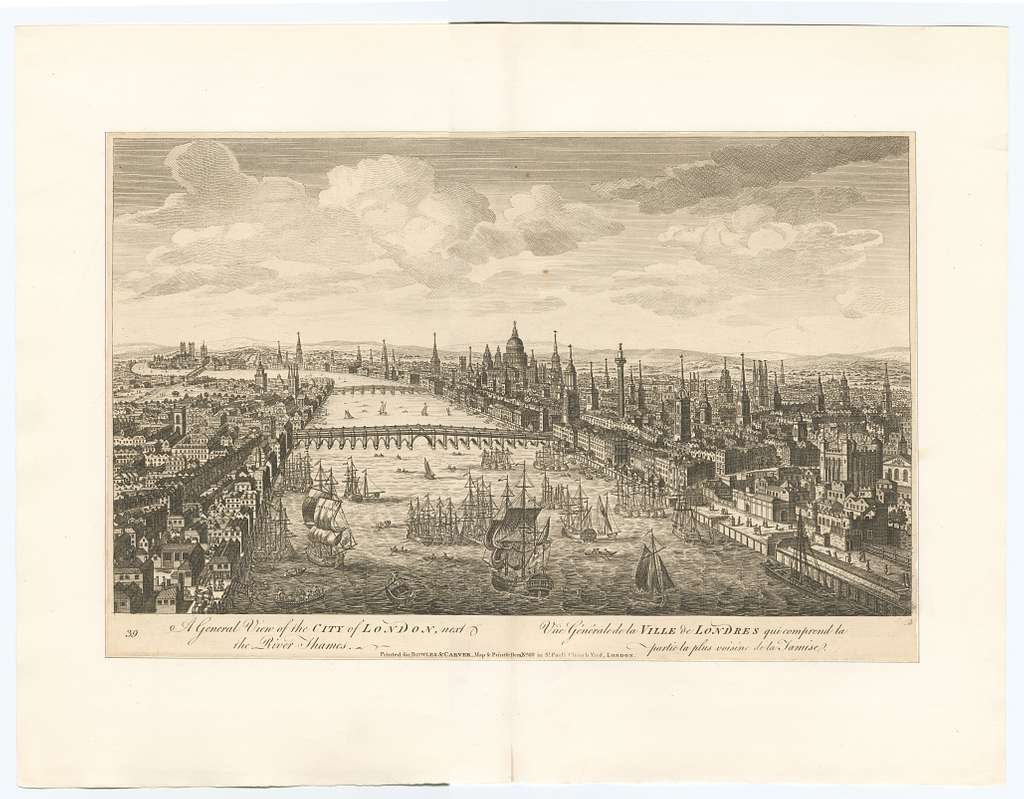“It was the best of times, it was the worst of times, it was the age of wisdom, it was the age of foolishness, it was the epoch of belief, it was the epoch of incredulity, it was the season of Light, it was the season of Darkness, it was the spring of hope, it was the winter of despair” (Dickens, 1859/2007, p. 36). The story captures the soul of London at a time of change. Yet, it also embraces the conflict between France and England that had spanned millennia. In each case, the Thames, London’s revered and reviled river, sets the scene for conflict and change. It was the same river when the Roman army rowed into the heart of England. It was the same waterway that saw the Norman invasion in 1066, where William the Conqueror was crowned at Westminster on Christmas Day and built the Tower of London. It was this river that the city saw as its soul and saviour (Watson, 1884), and the source of their damnation (Wilson, 1817).
London has been subjected to multiple incursions and military engagements because of the access to the city from the River Thames. London Bridge has been built and rebuilt multiple times since the Roman incursion. The river has been essential in providing access to markets and as a conduit for trade, and as a means to separate people on both sides of the river, limiting access between the city on the north and those outside the city on the south bank. For example, the Globe Theatre, which housed Shakespeare’s plays, was located on the south bank of the river, separated from London (Dustagheer, 2017), allowing the people living in the city to visit an area that was near but still outside the control of the city council (Porter, 1998).
Williams (2022) extensively documented the history of London and the river from 1100 BCE. The analysis captures the Roman invasion of Britain under Emperor Claudius and the establishment of a settlement in Londinium (47 CE). In addition, the work analyses the geography of the subsoil around London, noting that it is “topped with a layer of granite that comprises mainly flint, quartz and quartzite” (Williams, 2022, p. 2). The position and location of the Thames river have simultaneously provided access and isolated the city. In part, the creation of the London Bridge acted as a means to control movement for many centuries.
Butler (2009) captures the nature of how London has changed. In this analysis, the author documents the oral history of the region during modern changes. This captures an account of rolling down the Thames River and noticing the garbage floating by. In some ways, this mirrors what Kaila (2005, p. 86) references allegorically when talking about the chambers of the heart of the capital of the British Empire and noting that “the elimination of the ‘great stink’ became a national project of the first-order.” Equally, Halliday and Hart-Davis (Halliday & Hart-Davis, 2001, p. 76) explored this change to the river, noting that the creation of a sewer project “would have strength enough to double the work of Hercules and to cleanse not only the filthy stables but the river which runs through them.”
A river is a geographic place, but it is also more. In London, the Thames spans centuries and through this, wars, famine, and plague. Yet, it also perceives the bridge-building, the crossing by barges, and a span of cables. A river is a means both to enable trade with transport and exchange and, as it has, to isolate and separate. With people and goods, the Thames continues to flow, to live and act as the beating heart of London, carrying its people, culture, and memories inexplicably to the sea.
Butler, T. (2009). ‘Memoryscape’: Integrating Oral History, Memory and Landscape on the River Thames. In P. Ashton & H. Kean (Eds.), People and their Pasts (pp. 223–239). Palgrave Macmillan UK. https://doi.org/10.1057/9780230234468_13
Dickens, C. (2007). A Tale of Two Cities. Penguin UK. (Original work published 1859)
Dustagheer, S. (2017). Shakespeare’s Two Playhouses: Repertory and Theatre Space at the Globe and the Blackfriars, 1599–1613. Cambridge University Press.
Halliday, S., & Hart-Davis, A. (2001). The great stink of London: Sir Joseph Bazalgette and the cleansing of the Victorian metropolis. The History Press.
Kaika, M. (2005). City of Flows: Modernity, Nature, and the City. Routledge. https://doi.org/10.4324/9780203826928
Porter, R. (1998). London, a Social History. Harvard University Press.
Watson, A. (1884). THE LOWER THAMES.-III. The Magazine of Art, 7, 251–257.
Williams, V. R. (2022). London: Geography, History, and Culture. ABC-CLIO.
Wilson, J. (1817). The City of the Plague ... Second Edition. A. Constable & Company.

